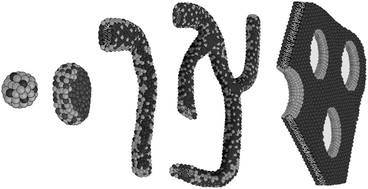Stomatosomes: perforated bilayer structures
Abstract
Stomatosomes and related structures formed by perforated fluid bilayer have been identified in a number of systems comprising

* Corresponding authors
a
Department of Physical and Analytical Chemistry, Uppsala University, PO Box 579, Uppsala, Sweden
E-mail:
Almgren@fki.uu.se
Fax: +46 18 4713654
Tel: +46 18 4713649
Stomatosomes and related structures formed by perforated fluid bilayer have been identified in a number of systems comprising

 Please wait while we load your content...
Something went wrong. Try again?
Please wait while we load your content...
Something went wrong. Try again?
M. Almgren, Soft Matter, 2010, 6, 1383 DOI: 10.1039/B922707E
To request permission to reproduce material from this article, please go to the Copyright Clearance Center request page.
If you are an author contributing to an RSC publication, you do not need to request permission provided correct acknowledgement is given.
If you are the author of this article, you do not need to request permission to reproduce figures and diagrams provided correct acknowledgement is given. If you want to reproduce the whole article in a third-party publication (excluding your thesis/dissertation for which permission is not required) please go to the Copyright Clearance Center request page.
Read more about how to correctly acknowledge RSC content.
 Fetching data from CrossRef.
Fetching data from CrossRef.
This may take some time to load.
Loading related content
